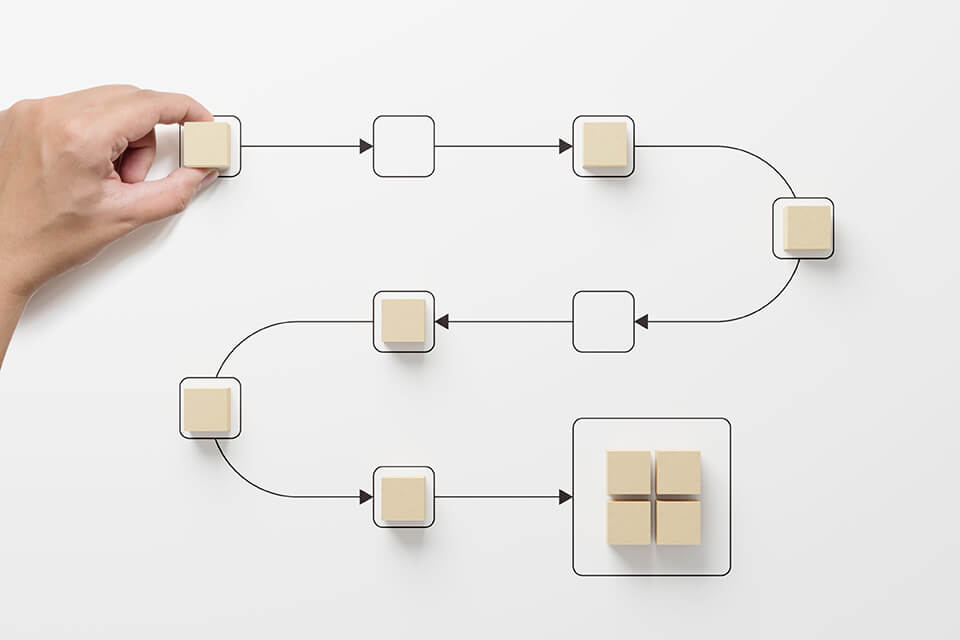In today’s hyper-competitive business landscape, understanding your customers and their experiences leads to success. Customer journey mapping is a powerful tool that allows businesses to gain invaluable insights into their customers’ interactions, needs, and pain points. By creating and understanding the customer journey, you can identify areas for improvement and craft strategies to enhance customer satisfaction and loyalty. In this cguide, we’ll walk you through the process of creating a customer journey map that will help you transform these insights into actionable results.
What Is Customer Journey Mapping?
Customer journey mapping is a strategic tool used by businesses to visualize the end-to-end experience of their customers as they interact with their products or services. It involves mapping out the various touchpoints and interactions a customer has with your brand, from the initial awareness stage to post-purchase support. This visual representation helps you understand the customer’s perspective and provides a holistic view of their experience.
Why Is Customer Journey Mapping Important?
- Enhanced Customer Understanding: It allows you to put yourself in your customers’ shoes, seeing your brand through their eyes. This empathetic approach helps you identify pain points and areas for improvement.
- Improved Customer Experience: By identifying pain points and optimizing touchpoints, you can enhance the overall customer experience, leading to higher satisfaction and loyalty.
- Data-Driven Decision Making: Customer journey maps are based on real data and customer feedback, making them a valuable resource for data-driven decision-making.
- Cross-Functional Alignment: It fosters collaboration across departments by providing a common visual representation of the customer journey, ensuring everyone is on the same page.
How to Create a Customer Journey Map
1. Define Your Customer Personas
Start by defining your customer personas. These are detailed profiles of your ideal customers, including demographics, preferences, pain points, and goals. Understanding your personas is crucial for tailoring the journey map to your specific audience.
2. Identify Customer Touchpoints
List all the touchpoints or interactions your customers have with your brand. These can include website visits, social media interactions, emails, phone calls, in-store visits, and more. Be exhaustive in listing these touchpoints.
3. Gather Data
Collect data on each touchpoint to understand customer behavior, preferences, and pain points. This data can come from customer surveys, feedback forms, analytics tools, and customer interviews. The more data you gather, the more accurate your journey map will be.
4. Create Customer Journey Stages
Divide the customer journey into stages that align with your customer’s experience. Common stages include Awareness, Consideration, Purchase, Onboarding, Use, and Support. Customize these stages to fit your business model.
5. Map Customer Emotions and Actions
For each touchpoint within a stage, map out the customer’s emotions, actions, and pain points. This step is crucial for understanding how customers feel at each interaction and what drives their behavior.
6. Highlight Pain Points and Opportunities
Identify pain points and areas for improvement in the customer journey. These are moments when customers are frustrated, confused, or dissatisfied. Simultaneously, identify opportunities where you can exceed customer expectations.
7. Prioritize Improvements
Not all pain points and opportunities are equal. Prioritize them based on their impact on the customer and your business goals. This will guide your efforts in addressing the most critical issues first.
8. Design Solutions
Now that you’ve identified areas for improvement, brainstorm and design solutions to address the pain points and capitalize on the opportunities. These solutions can range from website redesigns to improved customer support processes.
9. Implement and Test
Put your solutions into action and continuously test their effectiveness. Monitor customer feedback, conduct A/B testing, and gather data to measure the impact of your changes on the customer journey.
10. Iterate and Improve
Customer journey mapping is an ongoing process. As customer preferences and market dynamics evolve, so should your journey map. Regularly revisit and update it to ensure it remains a valuable tool for your business.
Tips for Effective Customer Journey Mapping
- Involve Cross-Functional Teams: Collaboration is key. Include representatives from marketing, sales, customer support, and other relevant departments to gain a holistic perspective.
- Use Visuals: Create visually appealing journey maps that are easy to understand. Visual elements like icons, charts, and colors can make complex information more digestible.
- Focus on Emotions: Don’t just map customer actions; pay attention to their emotions. Emotional insights provide a deeper understanding of the customer experience.
- Keep It Customer-Centric: Your journey map should always be centered around the customer’s needs and expectations. Avoid getting too internally focused.
- Regularly Update and Refine: The customer journey is dynamic, so your map should be too. Regularly collect feedback and data to refine your map and adapt to changing circumstances.
Customer journey mapping is a powerful tool that empowers businesses to understand their customers better, improve the customer experience, and drive growth. By following the steps outlined in this guide and staying committed to a customer-centric approach, you can create journey maps that not only provide valuable insights but also lead to meaningful changes that benefit both your customers and your business. Remember, the journey map is not just a static document; it’s a dynamic tool that should evolve alongside your customers and your business objectives.




